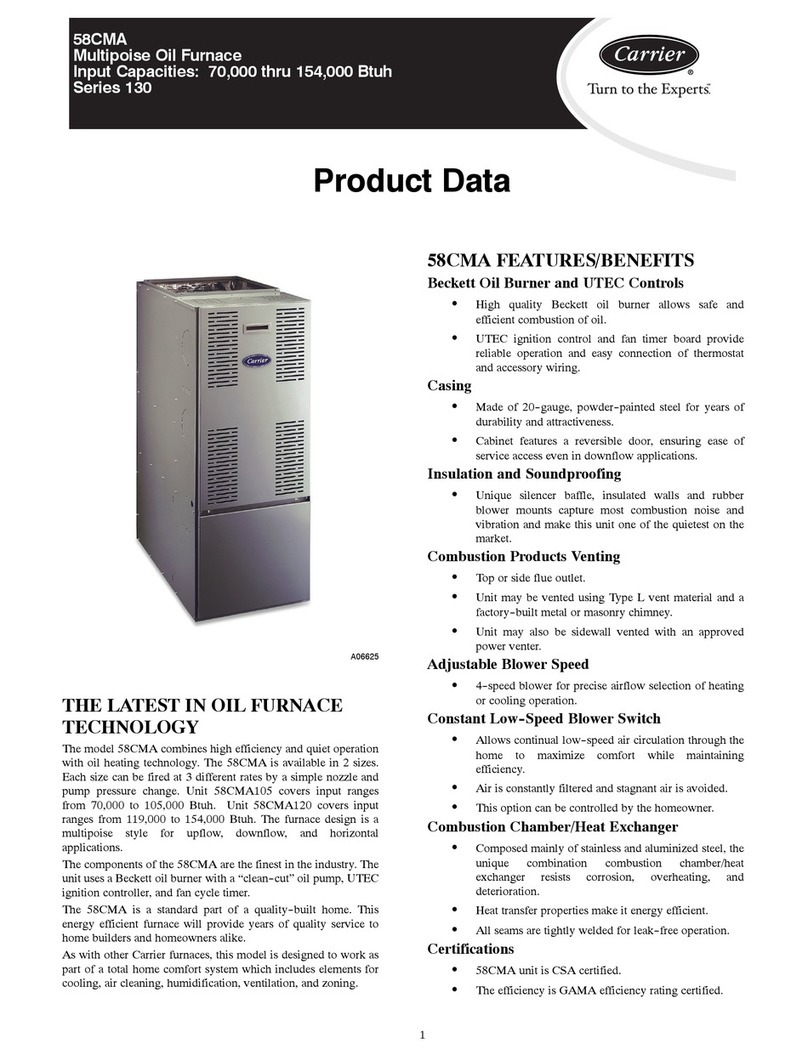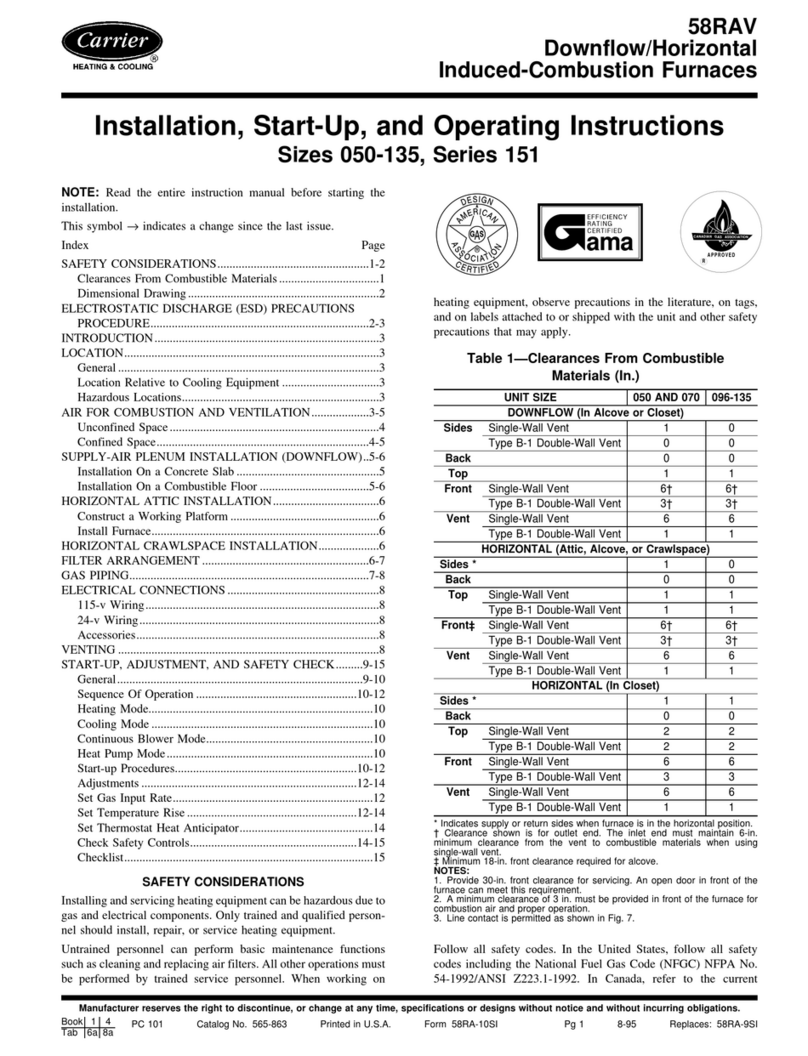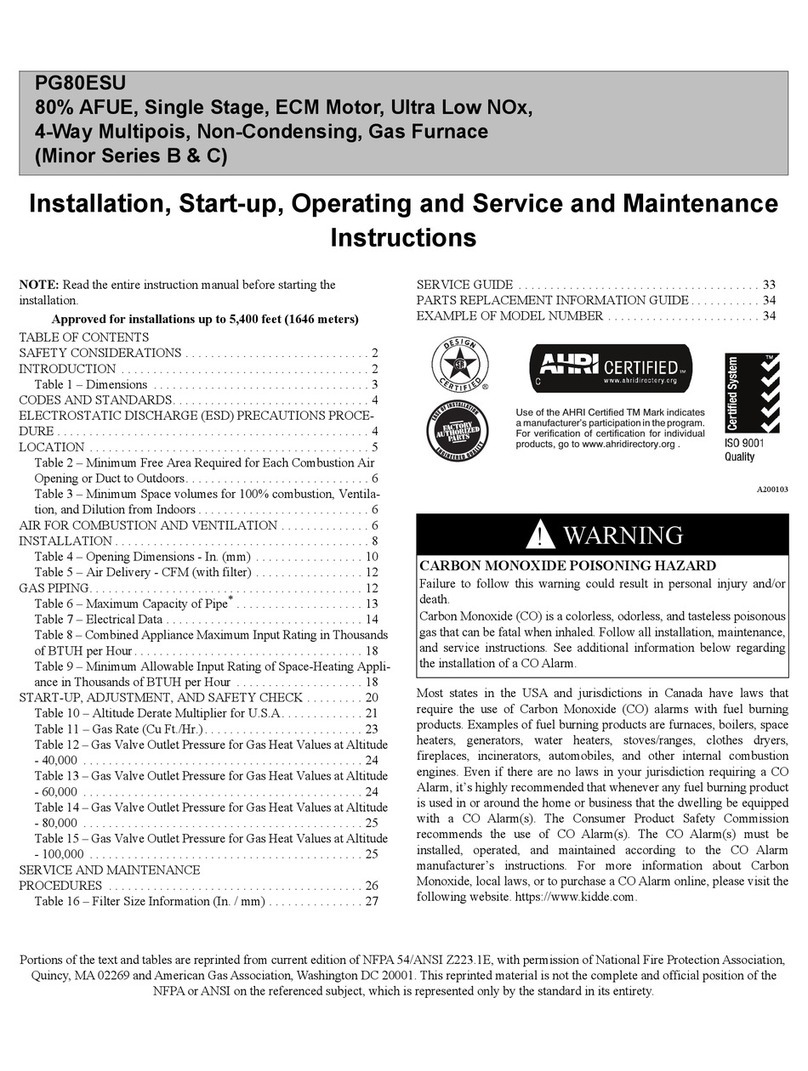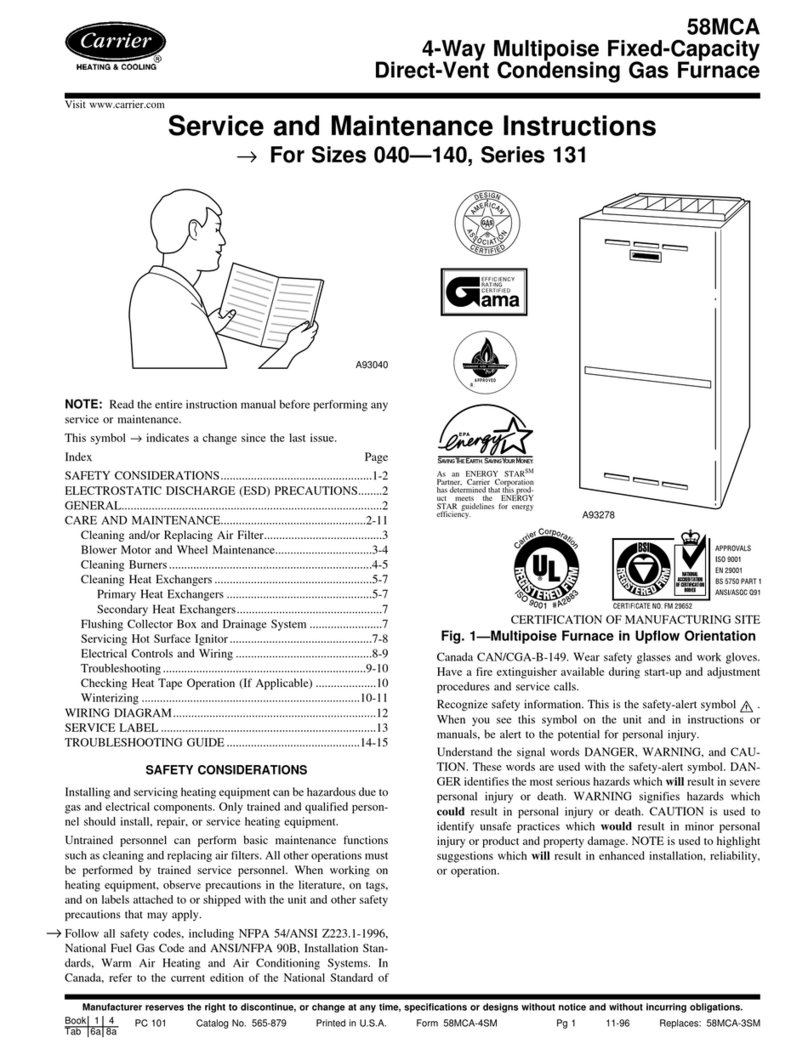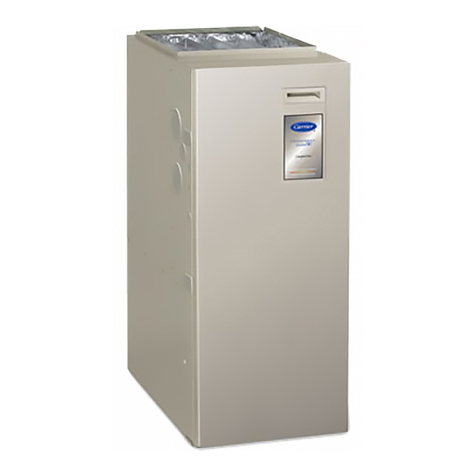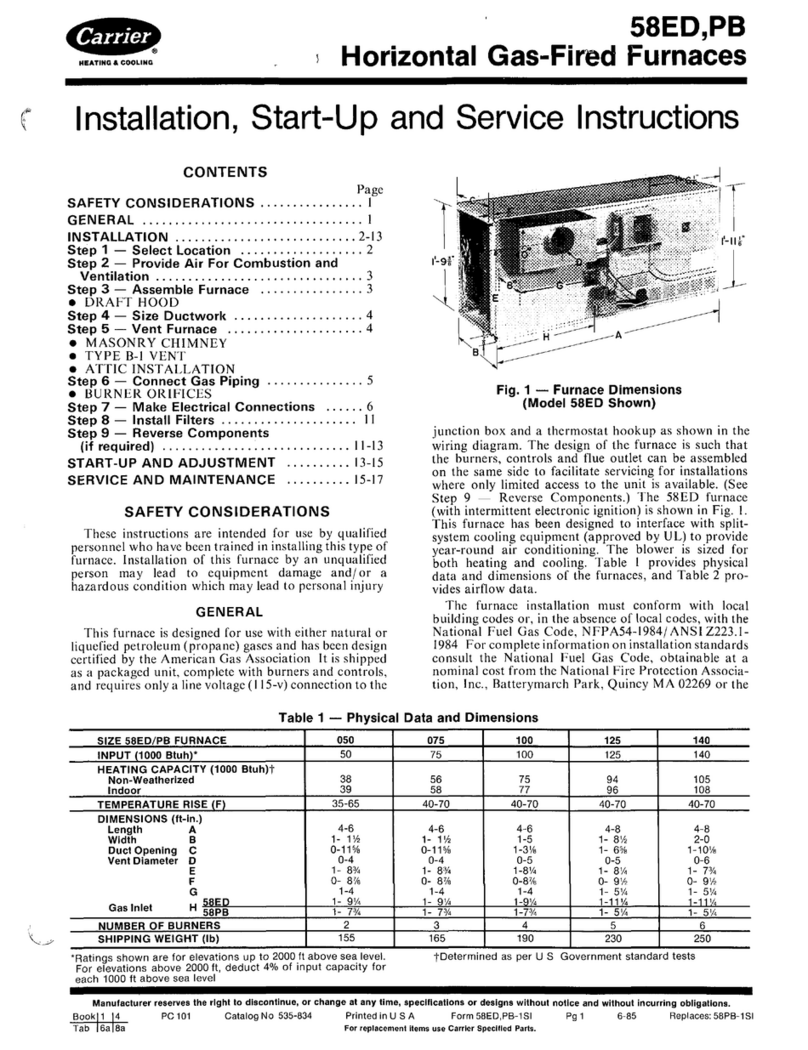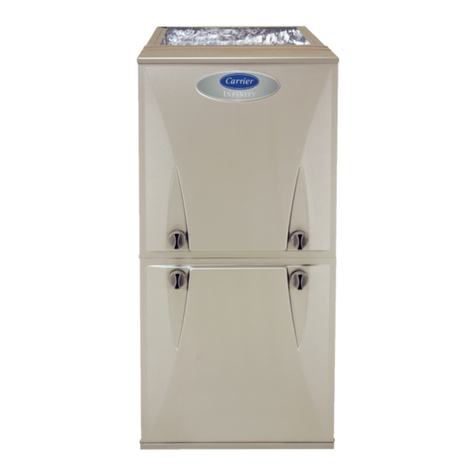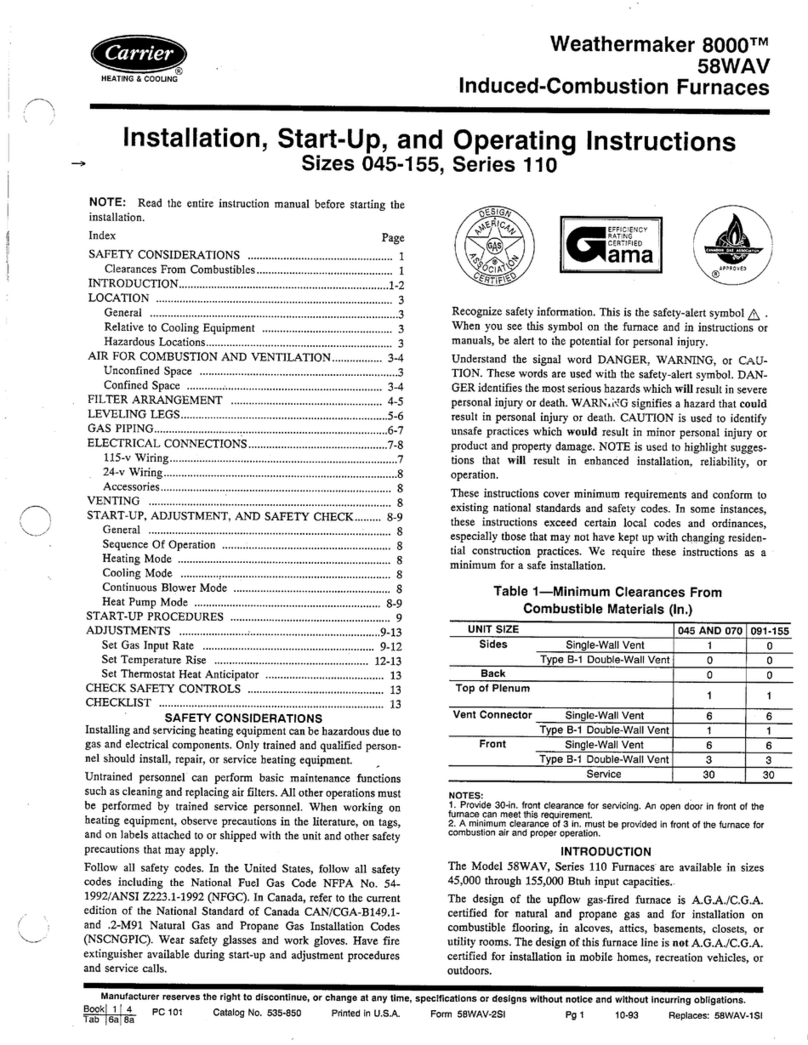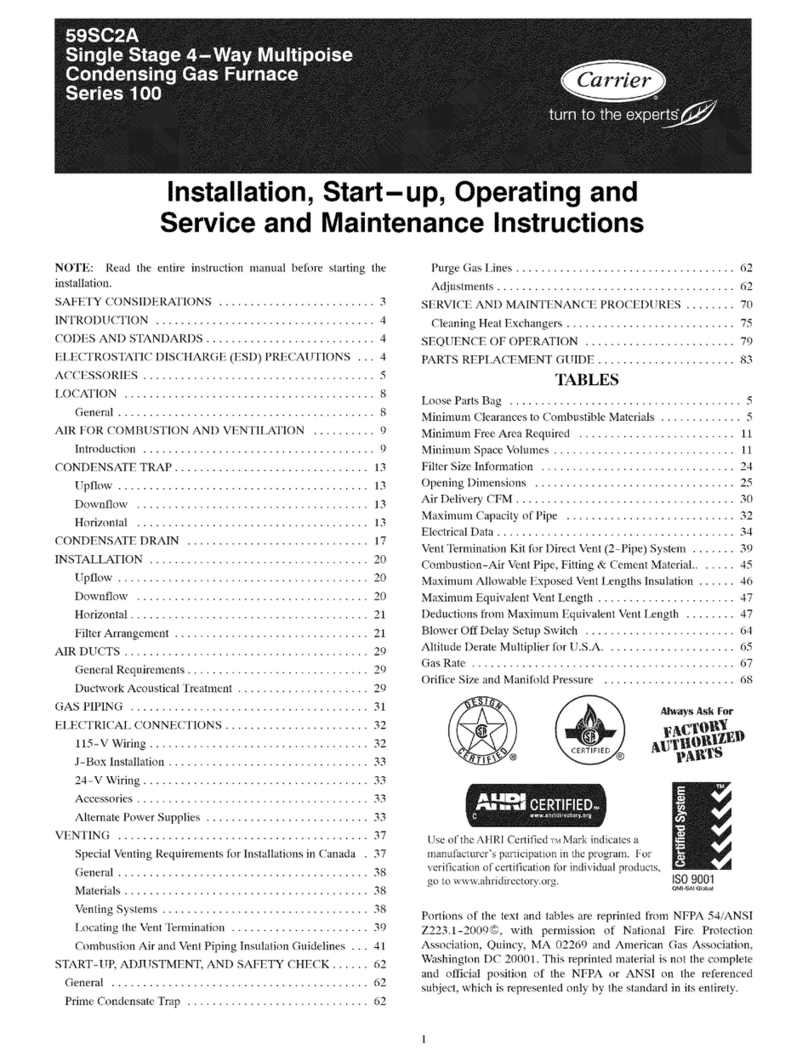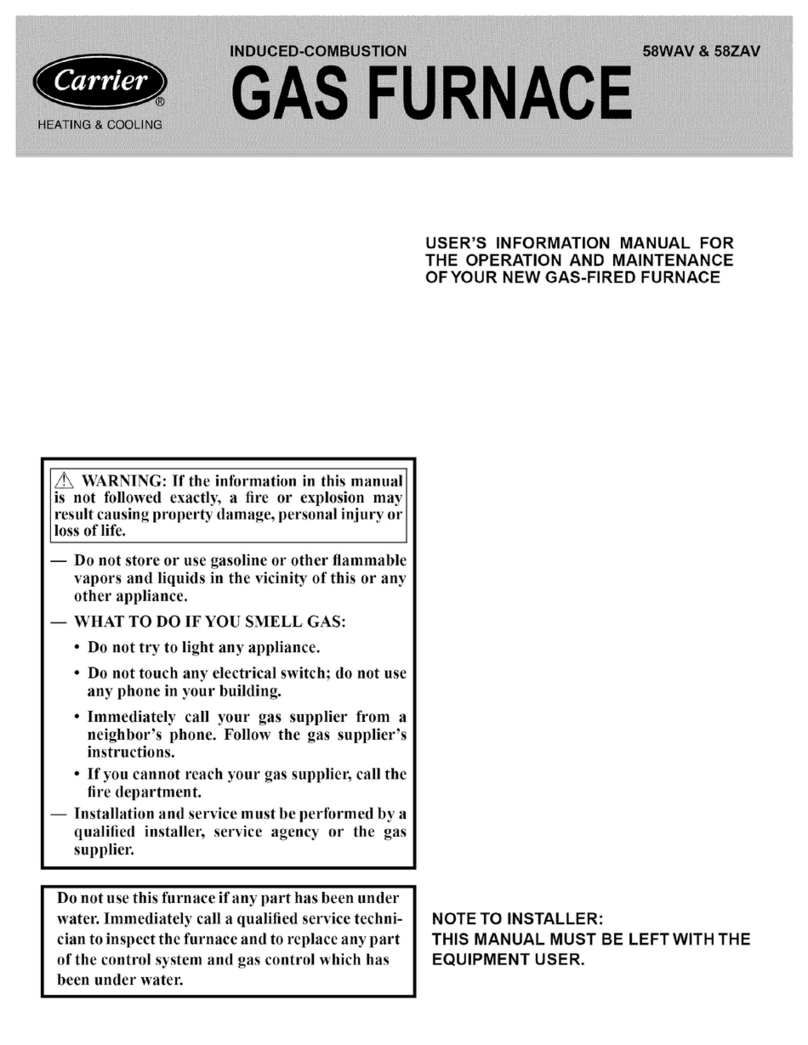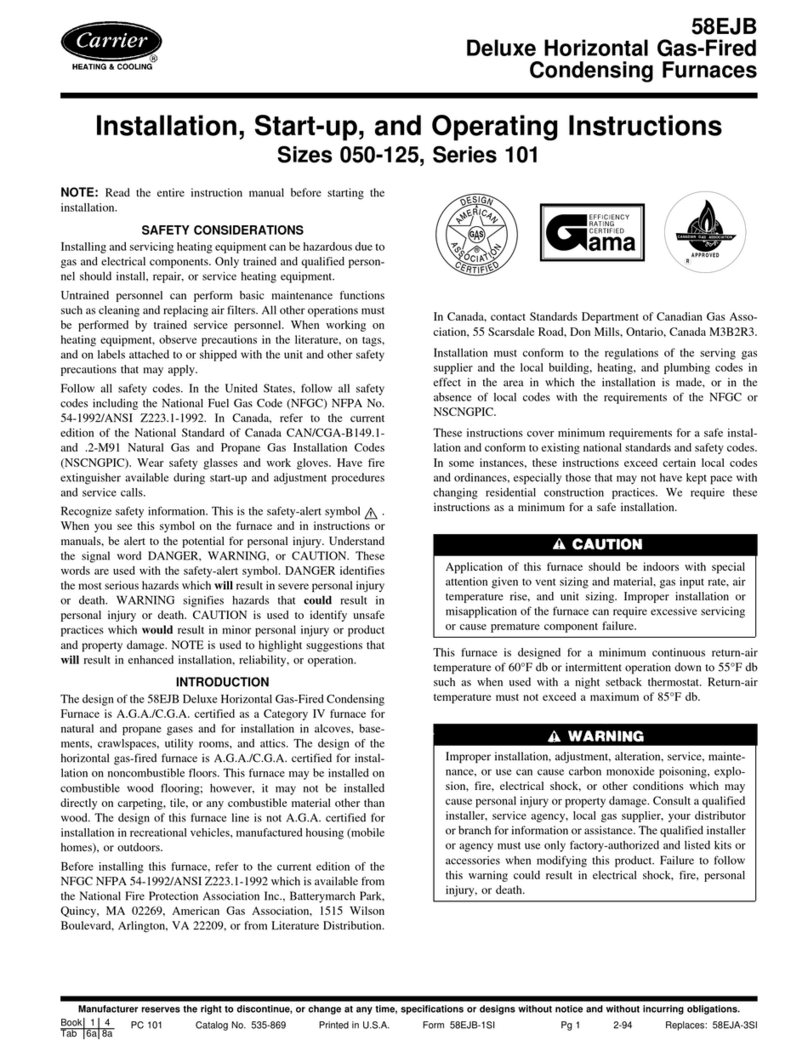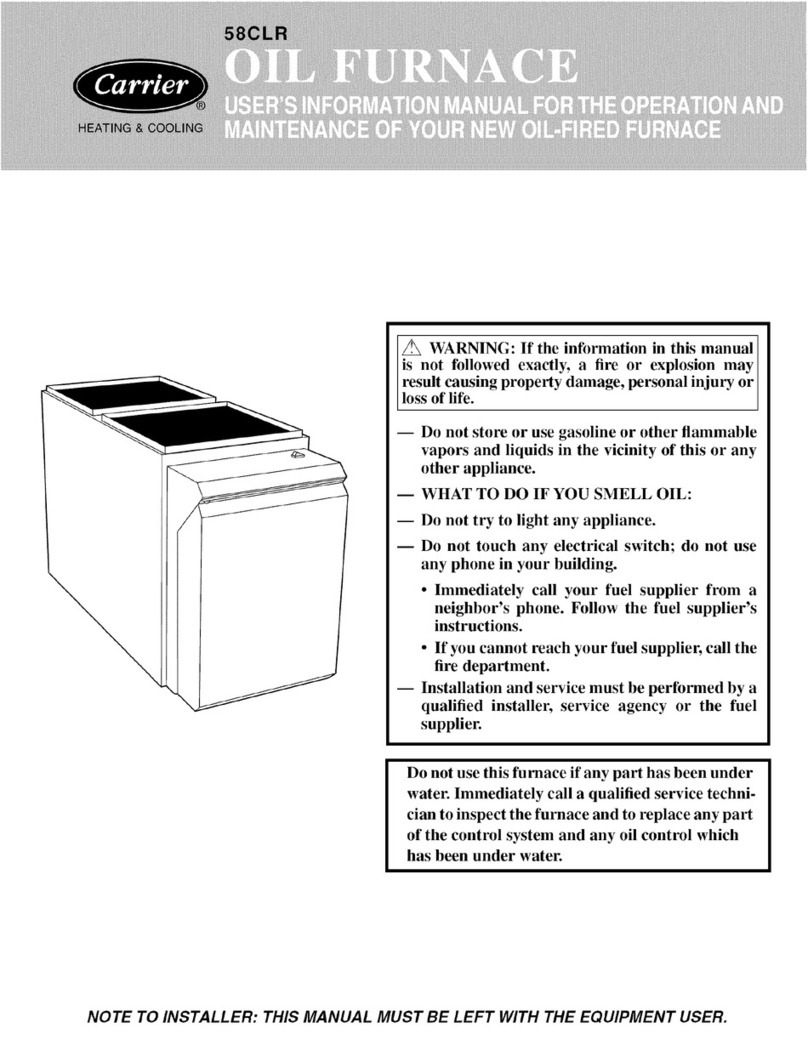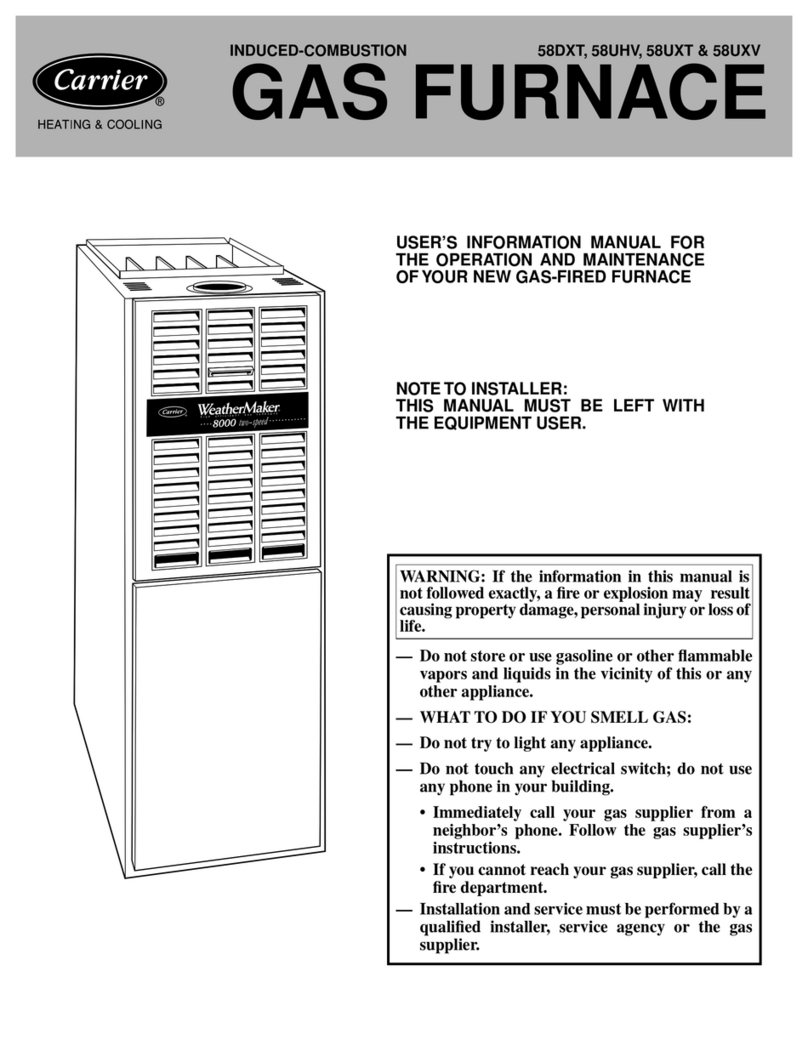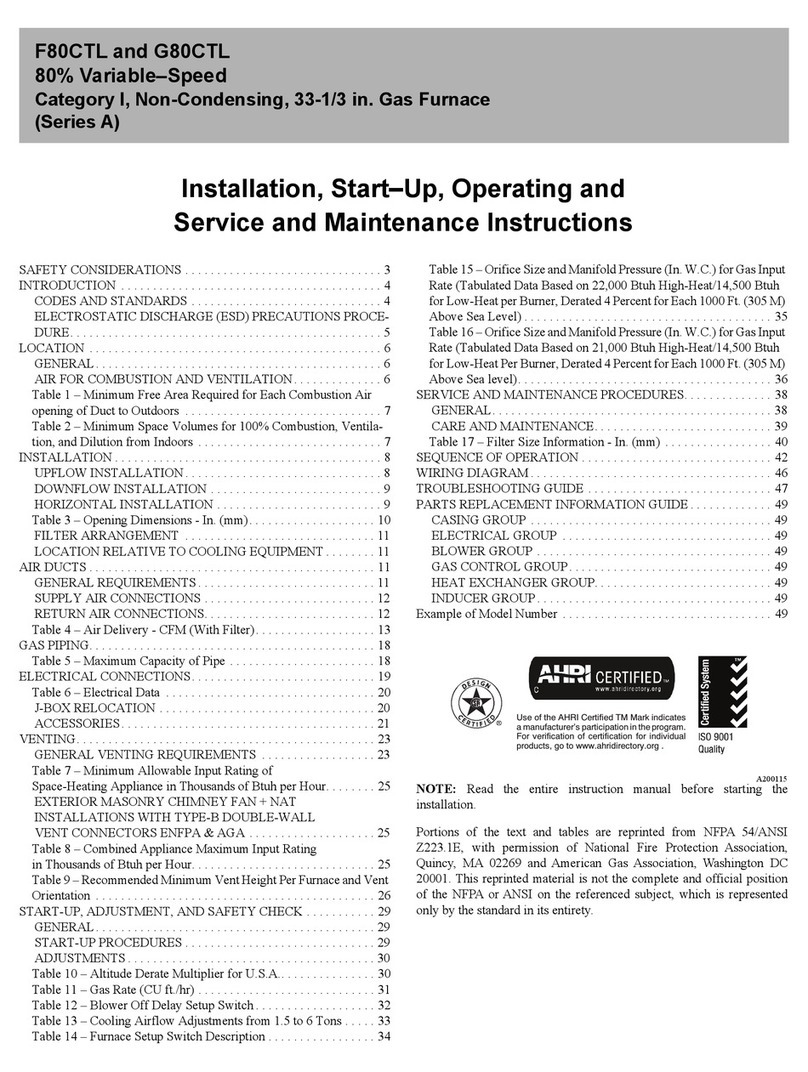
24°V Wiring
Instructions %r wiring thermostat (field supplied) are packed in
thermostat box Make them_ostat connections as shown in Fig. 3 or
4 at 24=v terminal board on ihn timer board.
Accessories
When installing optional accessories to this appliance, follow
manufacturer's Installation Instructions included with accessory.
Od-ler than wiring fbr themaostat, wire with a minimum of type "T"
insulation (63C>Frise) nmst be used for accessories.
HORIZONTAL OR DOVv_FLOW INSTALLATION
For horizontal installation, determine which "side" will become the
"top", when d_e unit is laid down. Remove the flue pipe clearance
knock=out fi'om the top of that side panel. Install the flue elbow so
that it exits the cabinet of d_e ft/mace through that opening.
For counterflow installation, the flue pipe must exit the cabinet
through 1 of the side panel openings (as above), then extended up
the side of the furnace. Insure that adequate clearances to con>
bustibles are observed. Downflow Conversion/Vent Guard Kit
MUST be used.
Remove burner by loosening mounting nuts and mrn oil burner
slightly counterclockwise to unlock the key hole burner flange.
Prevent putting undue strain on burner wiring. (It may be neces=
saV to disconnect burner wiring in some cases.)
To reinstall burner, insert on the four burner studs on key hole
burner flange and turn it clockwise to lock it and dghten nuts.
IMPORTANT: Burner retest always be installed in the upright
position with ignition control on top.
FILTERS
Never operate unit without a fiher or with filter access door
removed. Failure to adhere to this warning could lead to a
hazardous condition which could lead to equipment damage
and bodily harm
An external filter rack is provided as standard equipment with
furnace A sufficient clearance should be provided tbr air filter
access See Table S i\_r filter rack flange dimensions for return air
duct
Tab{e 8--Filter and Flange (In.)
UNIT AIR NLTER FLANGE OPENING
SIZE SBZE SRZE
10x24x1
105-12 or 15 X 23
16X25X1
t20-20 20 X 30 X 1 19 X 20
START-UP, ADJUSTMENT, AND SAFETY CHECKOUT
Step l--Operational Checkout
DO NOT TAMPER WITH UNIT OR CONTROLS (7ALL
YOUR SERVICE TECHNI(IAN. Failure to follow this
warning could result in personal and/or property damage
Installation of fmnace is now complete Run through the ibltowing
checkout and ensure each item has been peribm_e&
1. (orrect nozzle size has been selected for desired input rate.
2. Blower wheel support is removed.
3. Electrical wiring is completed according to Fig. 3 or 4.
4. Blower access door is secured in place
5. Valve on oil supply line is open.
6 RESET BUTTON on primaD" control is pushed down
7 Flame observation door and 2 cleanout access doors located at
fi'ont of unit are closed.
8. Thermostat is set for heating mode and set above room
temperature
If all of the above items have been perfbrmed, set main electrical
switch to ON position and burner should start. When burner starts,
proceed to Combustion Check section.
Step 2--Combustion Check
In order to obtain optimum per%rmance from oil burner, the
following setup procedures must be followed:
1 A test kit to measure smoke, stack draft, over-fire draft, oil
pmnp pressure, (02, and stack temperatures MUST be used in
order to obtain proper air band setting. Although all of the
above measurements are required _br optimum setup and
efficiency data, the most impmlant readings that must be taken
are smoke number, over-fire &aft, stack draft, and pmnp
pressure
2. The proper smoke nmnber has been established by engineer-
ing tests to be between 0 and 1. This degree of smoke emission
is commonly referred to as a "trace" of smoke. It is recom-
mended m use a Bacharach hue spot smoke test set or
equivalent.
3. In order to ensure proper draft through fhrnace, a barometric
draft regulator (supplied with furnace) retest be installed.
In order fbr this device to fhnction properly, barometric damper
must be mounted with hinge pins horizontal and face of damper
vertical. (See instructions included with damper.) The draft regu-
lator should be adjusted after furnace has been firing fbr at least 5
minutes, and set between -0.025 and -0.035 in. wc. (See Table 9.)
4. The over-fire &aft, which is taken through observation door
(located in center line above burner in ii'ont panel of furnace),
is a measurement necessary to detem_ine if there is a blockage
between oil burner and flue outlet.
There should be a total pressure drop of between 0.020 and 0.05 in.
wc through furnace as shown in Table 9. The over-fire draft must
be set within the range shown in Table 9.
TaRe 9--Furnace Draft Conditions (In. WC)
FURNACE FLUE OVER-FIRE TOTAL RESTRICTION
iNPUT DRAFT DRAFT THROUGH
{BTUH) MINIMUt'V] MAXIMUM HEAT EXCHANGER
70,000 -0.025 0.010 0.020 to 0.035
91,000 -0.025 0.020 0.030 to 0.045
108,000 -0.025 0.025 0.035 to 0.050
110,000 -0.025 0.025 0.035 to 0.050
140,000 -0.025 0.025 0.035 to 0.050
154,000 -0.025 0.025 0.035 to 0.050
A reading outside the range shown in Table 9 (for example +0.1 in.
wc) would indicate that f_lraace is in an extremely high-pressure
condition in primary section. This condition may be caused by any
of the following problems:
a. Excessive combustion air due to air shutter being too wide
open.
b A lack of flue &aft (chimney effect) or some other
blockage, such as soot, in secondary section of heat
exchanger.

